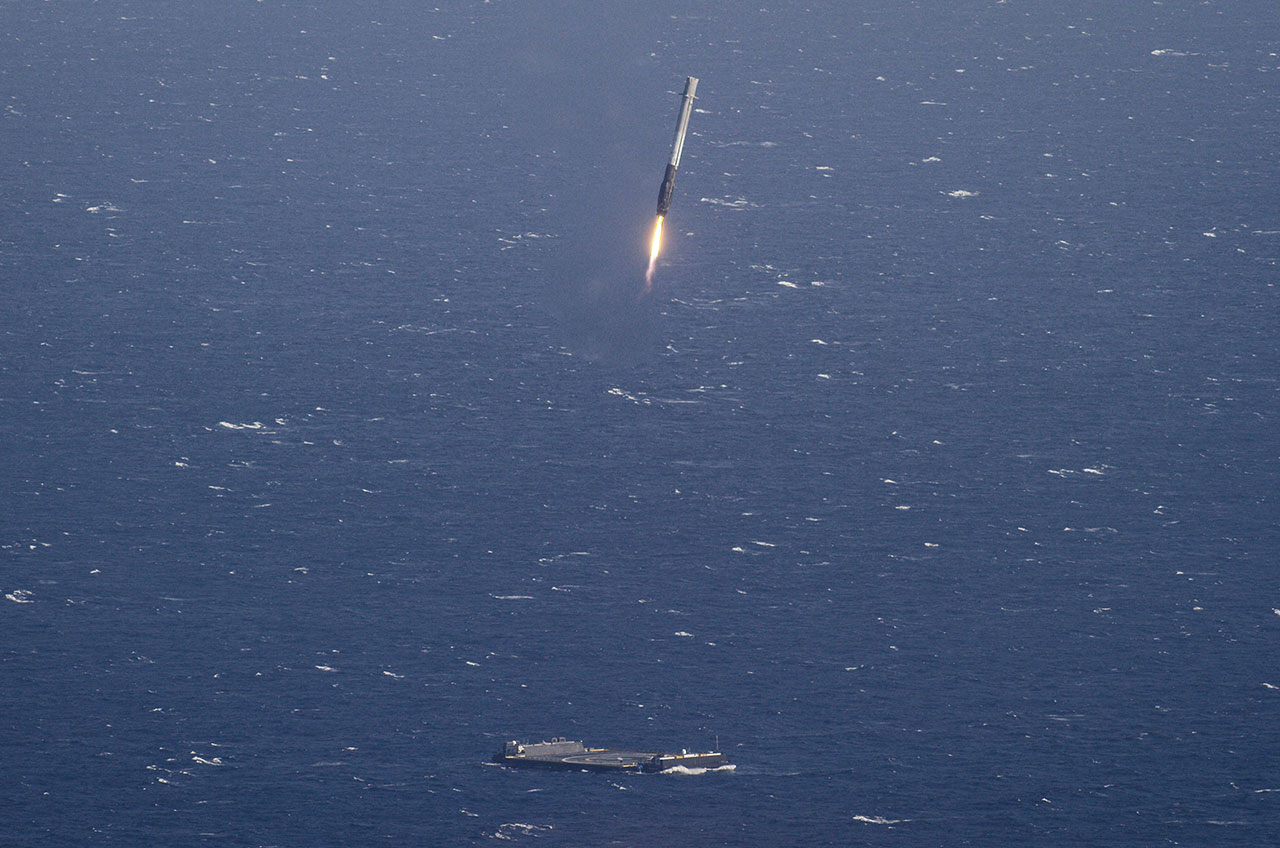

The latter have included the Rapid Scatterometer (RapidScat), the Cloud Aerosol Transport System (CATS) and a pair of Heat Rejection Subsystem Grapple Fixtures (HRSGFs), which were later attached to the station’s external radiators during U.S. They transported a range of supplies, tools, equipment and research facilities and experiments to several expedition crews, as well as a number of unpressurized payloads inside Dragon’s trunk. Between October 2012 and April 2015, six Dragons journeyed to the ISS, each berthing at the Earth-facing (or “nadir”) port of the Harmony node. All told, the original CRS contract required SpaceX to deliver a total of 44,000 pounds (20,000 kg) of equipment and supplies to the ISS. With the successful completion of the Demo mission, SpaceX was able to begin its initial round of 12 cargo delivery flights to the space station, conducted through 2016.

In launching its Demo mission in May 2012, SpaceX became the first commercial entity to accomplish rendezvous and berthing with the space station, when Dragon was captured by Expedition 31 crewmen Don Pettit and Andre Kuipers, using the 57.7-foot-long (17.6-meter) Canadarm2.
#Spacex drone station full#
Under the terms of the initial CRS agreement, both SpaceX and its fellow commercial cargo partner, Orbital ATK- which operates the Cygnus resupply vehicle-were required to conduct a Commercial Orbital Transportation Services (COTS) “Demo” mission to the station, before pressing into their full commitment of dedicated flights.

Including today’s spectacular launch, this brings to nine the total number of Dragons lofted towards the ISS in a little less than four years. Photo Credit: John Studwell / AmericaSpace Dragon CRS-8 atop Falcon-9, hours before liftoff. As with SpaceX’s previous ISS-bound missions, the launch window was an “instantaneous” one, imposing additional restrictions and leaving little margin for last-minute technical issues or changeable weather conditions.Ībout ten minutes after leaving the Cape, Dragon separated from the second stage of its Upgraded Falcon 9 booster and was in the process of deploying its solar arrays and other hardware, ahead of a robotic capture and berthing by Expedition 47 crew member Tim Peake on Sunday morning. EDT Friday, 8 April, from Space Launch Complex (SLC)-40 at Cape Canaveral Air Force Station, Fla.

Liftoff of the CRS-8 mission-flown under the language of the initial $1.6 billion Commercial Resupply Services contract, signed between NASA and SpaceX in December 2008-took place at 4:43 p.m. Photo Credit: John Studwell / AmericaSpaceĪlmost a year since the launch of its last fully-successful Dragon mission to the International Space Station (ISS), SpaceX has delivered another of its venerable cargo ships toward the orbiting outpost. The flight marked the first successful offshore barge landing for the company as well, marking the second time SpaceX has achieved a landing after launching from the Cape. SpaceX’s Falcon-9 flew into clear blue skies over Cape Canaveral AFS this afternoon, taking aim with Dragon for the CRS-8 mission to the ISS.


 0 kommentar(er)
0 kommentar(er)
